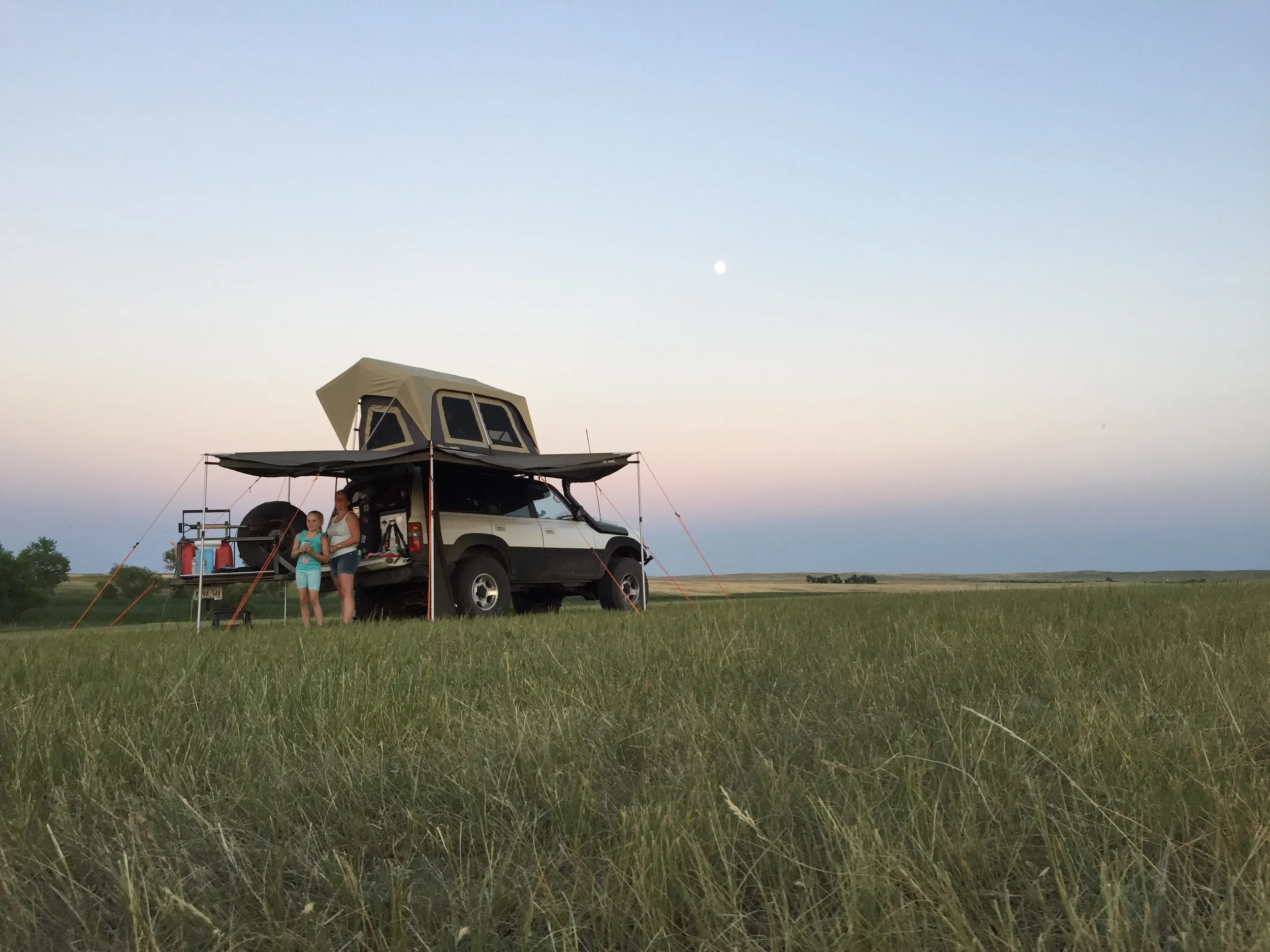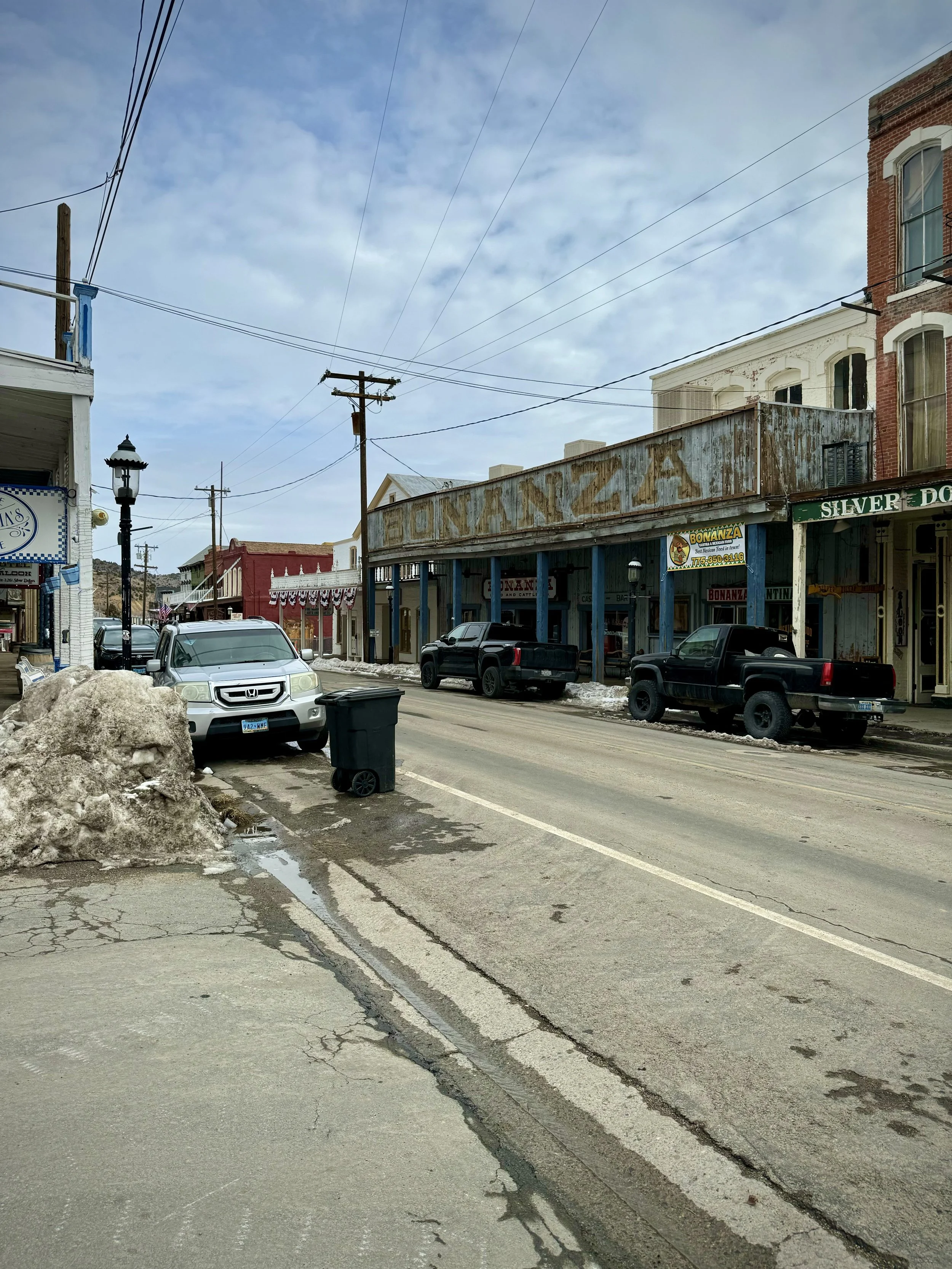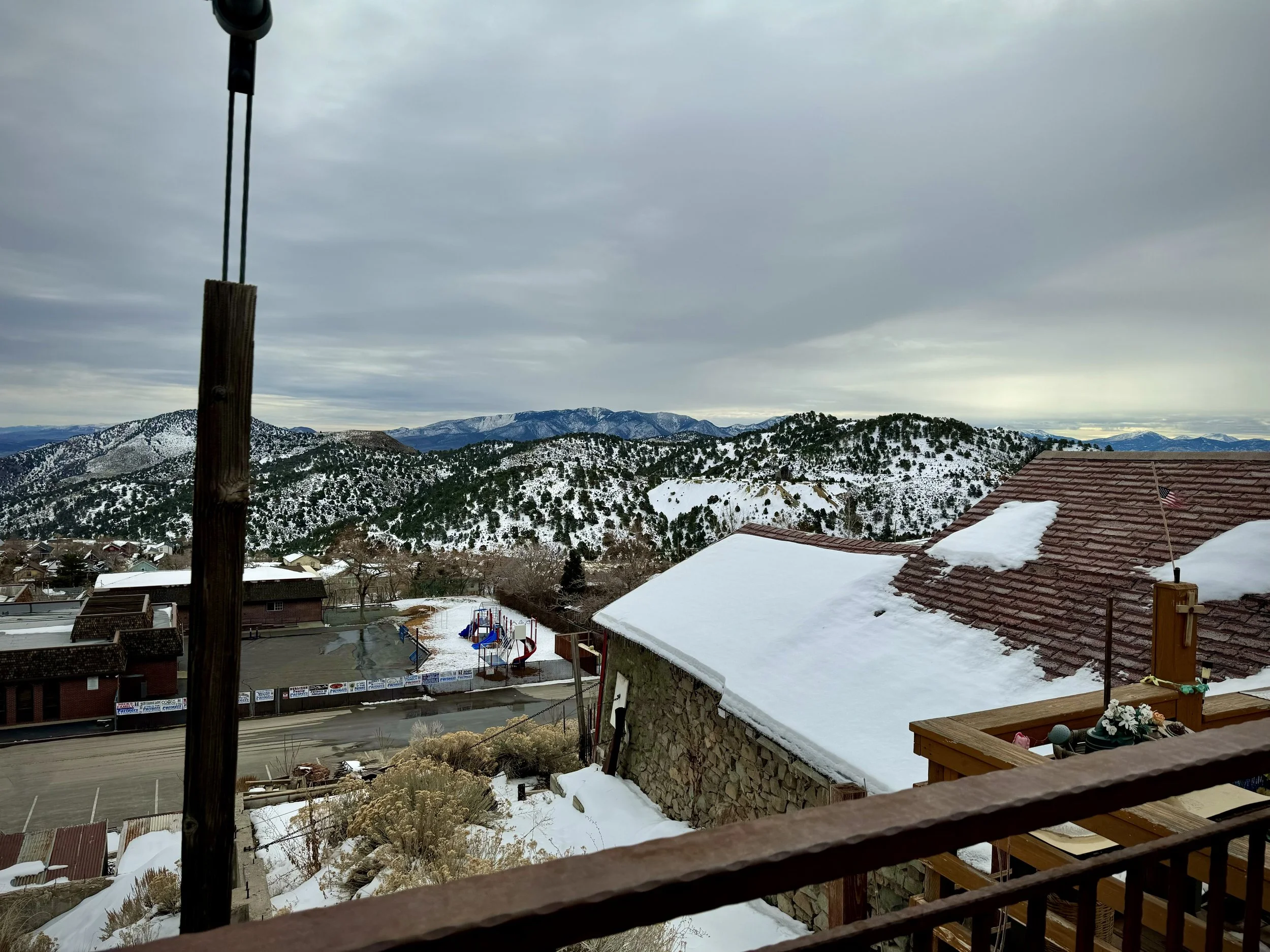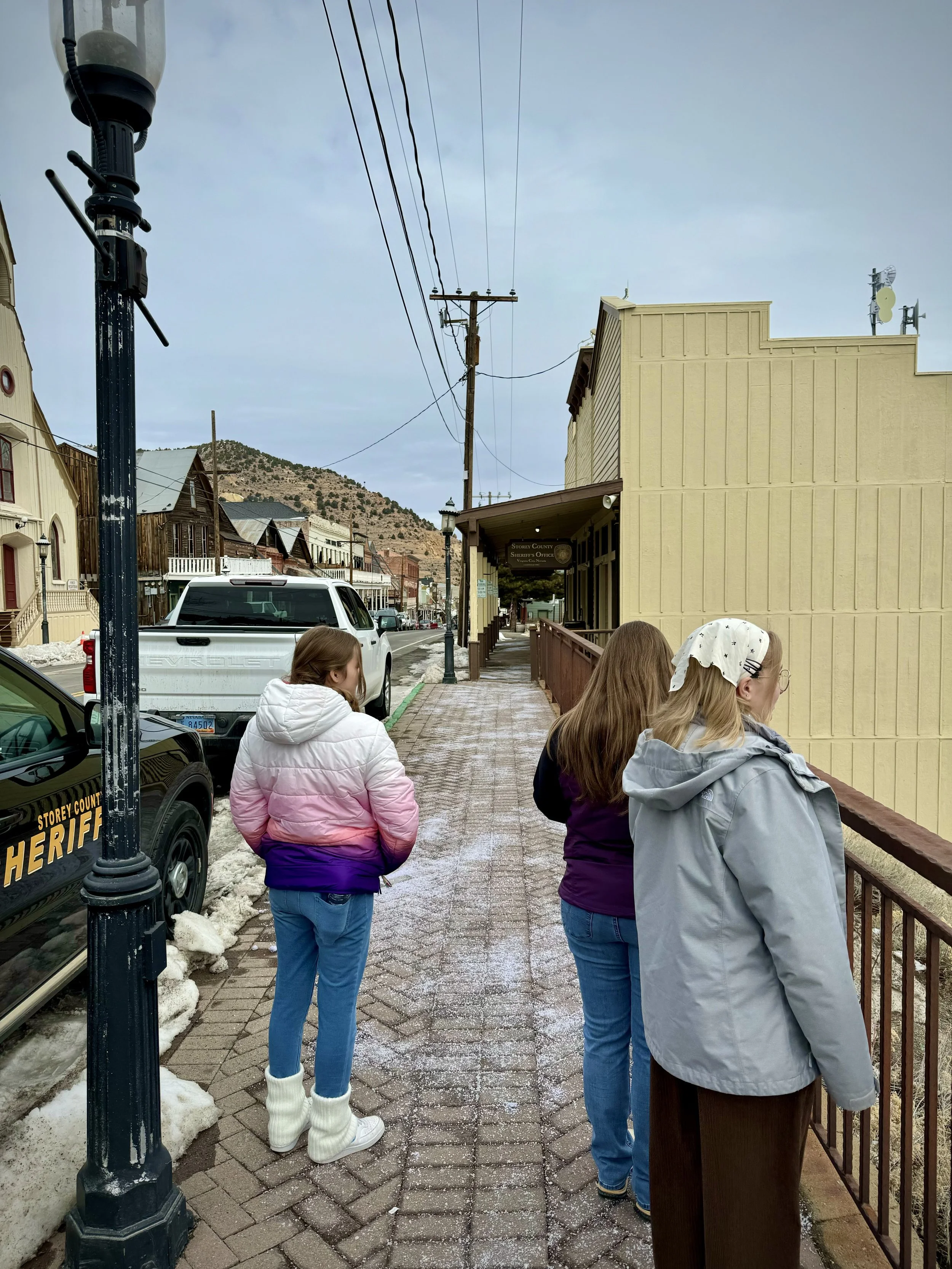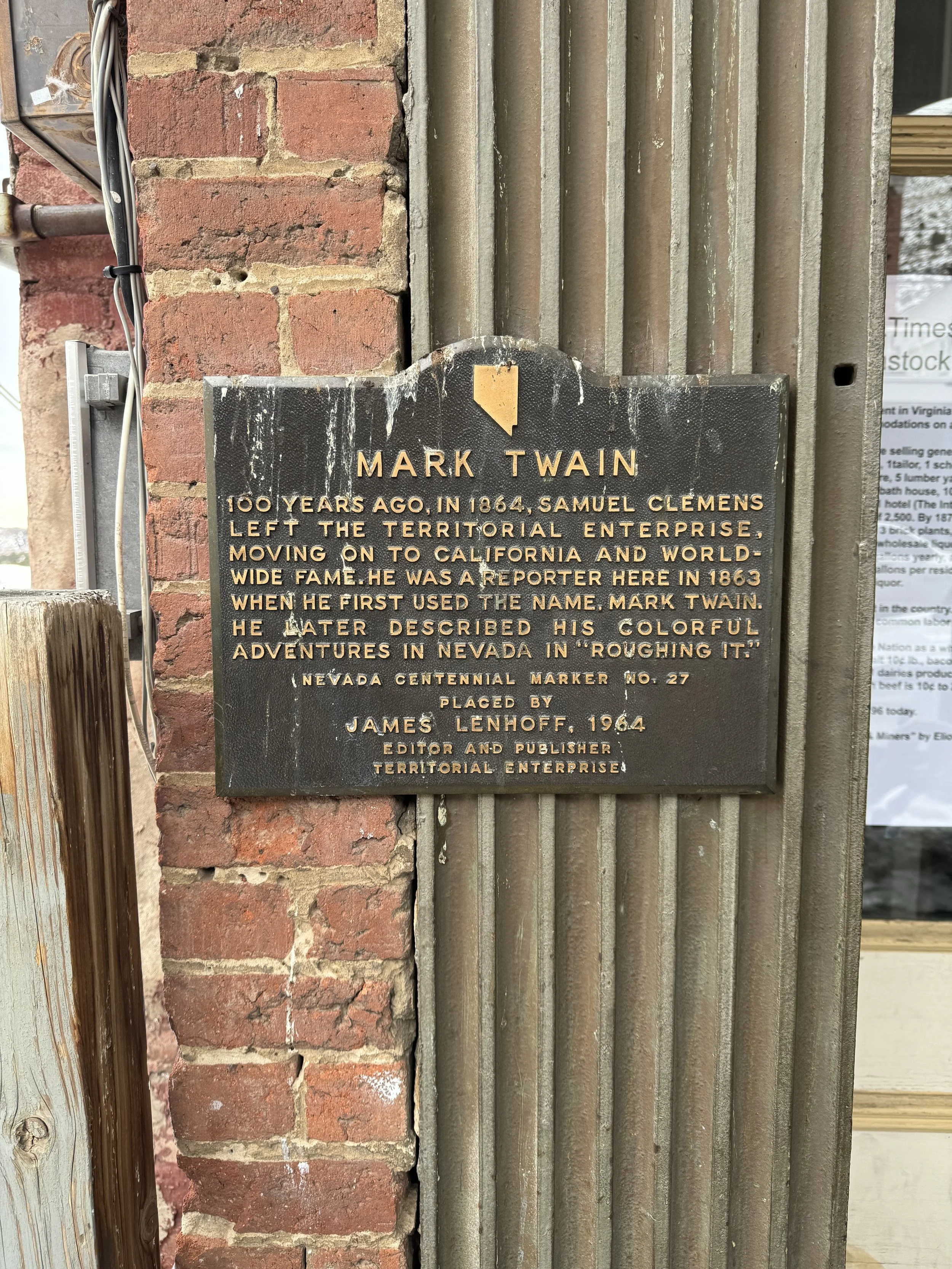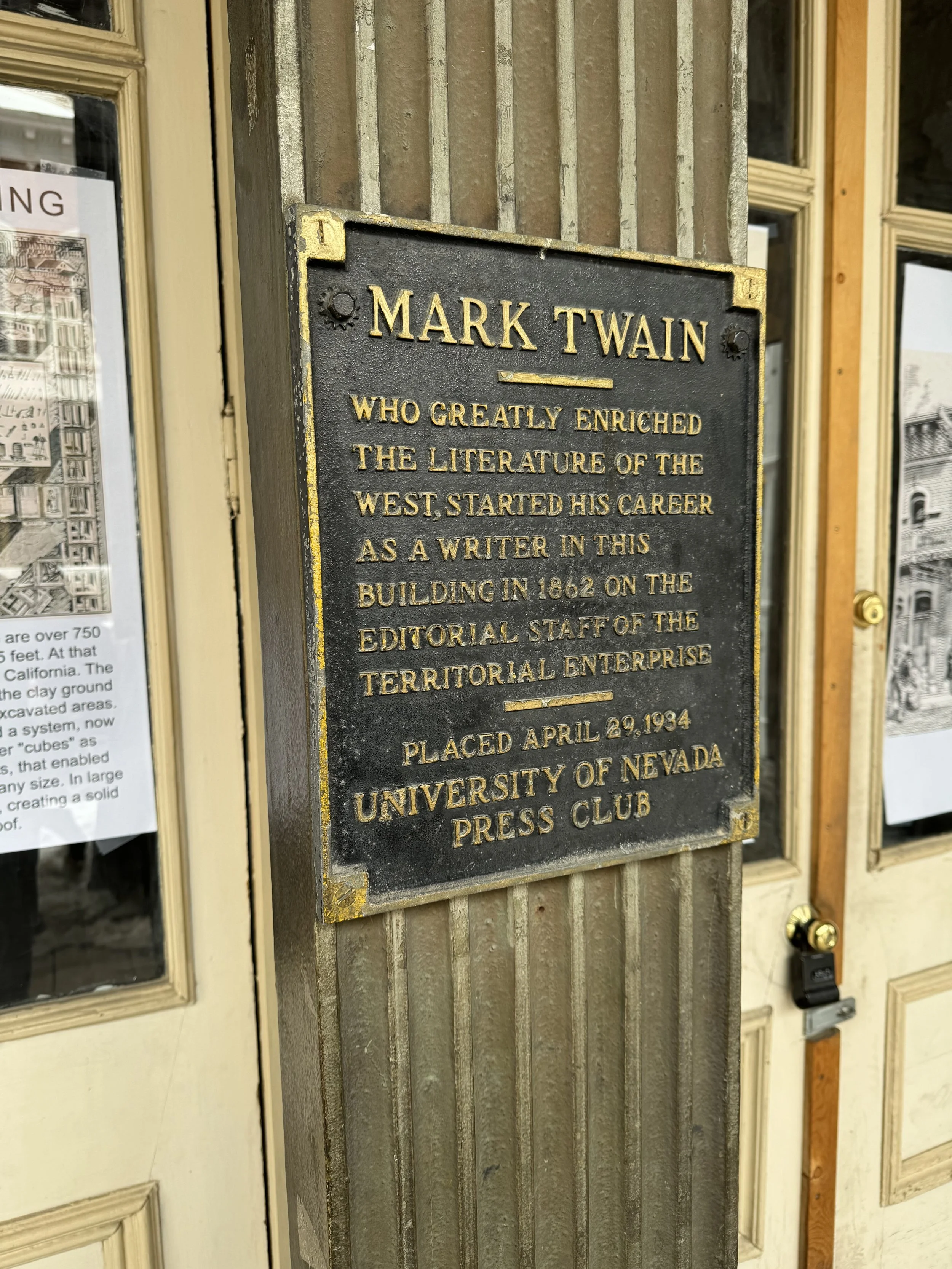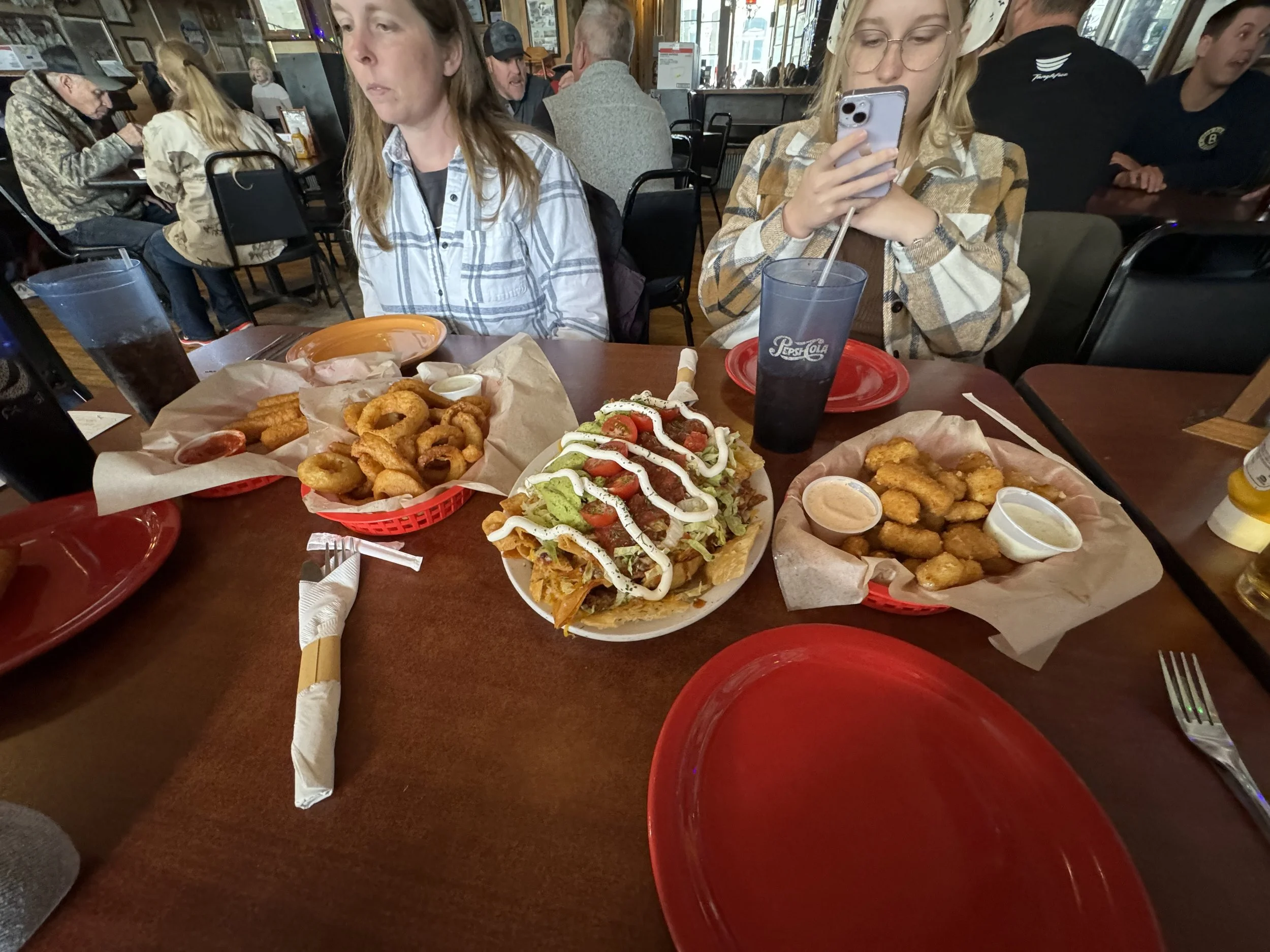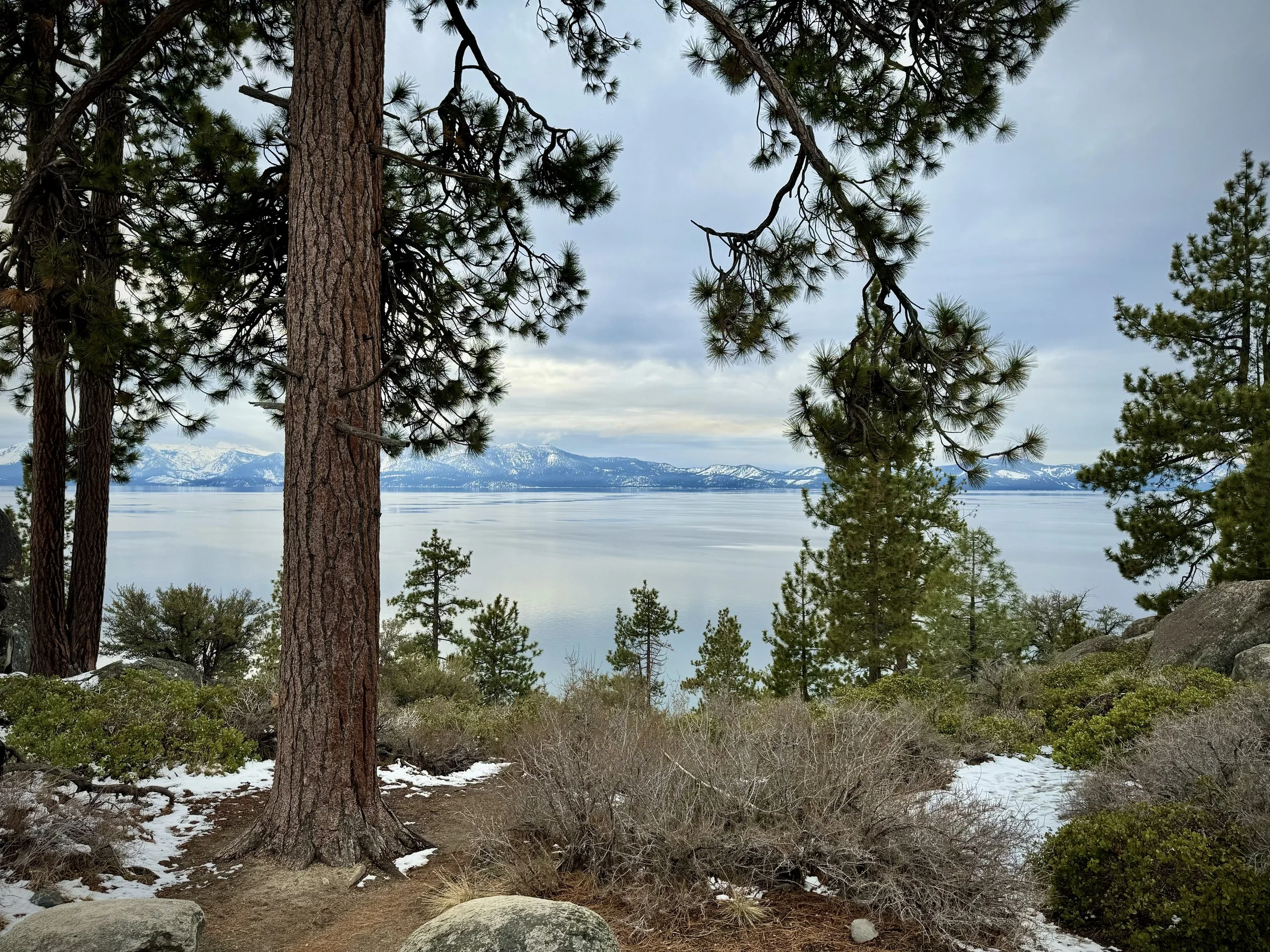After moving, quite literally, across the country, you’d think that we’d be tired of traveling. It was quite the contrary though and we couldn’t wait to get out and explore this foreign (to us) and spectacular landscape. Heading 30min to the west, we stopped visited a little town that some consider the sole reason for Nevada even being on the map, Virginia City. When I say this small town put Nevada on the map, I’m not kidding. When a massive silver deposit known as the Comstock Lode was discovered here in 1859, this place literally blew up overnight and is credited with supporting the growth of not only Nevada, but San Francisco as well. If the silver discovery wasn’t enough for people to remember this small town, then the 1960’s classic tv show “Bonanza” definitely was. This tv show ran for 14 seasons and 431 episodes, from 1959 to 1973 bringing the 1860’s Nevada silver rush to the living room of every family in America.
My dad used to watch reruns of Bonanza when I was a child. Never did I think that this small town boy from Minnesota would ever end up on the streets that this tv show depicted for millions to see. Another thing I didn’t expect, as we explored the streets of this historic western town, was another small town name from a Midwest town, Samuel Clemens. I know, I know. You’re like, “Who the heck is Samuel Clemens?” Well, let me tell you a little story. Samuel Clemens, of Florida, Missouri, moved out west like most folks after the silver was discovered in Virginia City. He had hopes of striking it rich, but ultimately had to seek other employment to make ends meet. He began his writing career by writing for the local paper in 1862 under the alias “Mark Twain”. In 1864 he left Virginia City and made his way to California where he wrote the literature that he is most famous for now. We run into another place that Mr. Clemens was at before he ended up in Virginia City a couple of months later but we’ll save that story for another time.
After exploring the streets of Virginia City and having some very unhealthy food to eat, we decided to go explore another locality that was 45min to the southwest. We made our way west on historic US Route 50 into Carson City, the state capital, and up and over the eastern slopes of the Sierra Nevada mountains to a place that I’d personally dreamt of visiting all of my life. Up and over the mountain pass and making our way down the back ridge paradise started to come into focus. I say paradise, because if you’d ask me to describe what paradise looks like it wouldn’t be too far from what we were seeing. Majestic green pines, granite boulders and outcrops, snow capped mountains all around and of course the crystal clear blue waters of Lake Tahoe lying before us. Paradise people, paradise. Unfortunately, this day we were only able to catch a glimpse from the shores near Glenbrook, NV due to the late hour of the day and the impending blizzard that was moving in from the west. We thought it best to head back over the mountain pass and back home before the winter weather made us temporary residents of the area, not that we would’ve minded too much. Rest assured though, as we’ll make our way back to Lake Tahoe once again in the future.
